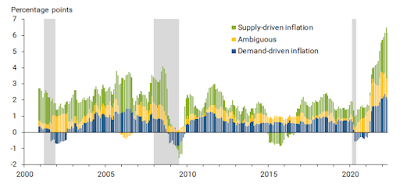In his 1987 book On Ethics and Economics, Nobel Prize winning economist Amartya Sen wrote that "economics, as it has emerged, can be made more productive by paying greater and more explicit attention to the ethical considerations that shape human behaviour and judgement". That is essentially the goal of Jonathan Aldred's 2009 book, The Skeptical Economist. The ethical underpinnings of economic models are largely left unexamined, so Aldred (and before him, Sen) makes a strong point that it is useful to realise that economic models and theories are not entirely value free, despite many (or most) economists' hopes (or assertions) that economics is a positive science.
However, despite the importance of the topic area, I found Aldred's treatment to be somewhat uneven. There are good parts to the book, but also some parts that are not so good. Unfortunately for the reader, the bad parts occur earlier in the book. For example, the start of Chapter 2 paints economics as 'the dismal science', a common trope, noting that:
One reason is that many economists are profoundly cynical about human behaviour and the motivation that underlies it.
However, to paint economics as the dismal science for such a reason is to ignore the real origins of the term. In his 1849 book Occasional Discourse on the Negro Question, Thomas Carlyle labelled economics the dismal science because economists were not in favour of reintroducing slavery in the West Indies (see Wikipedia on this point). It is unlikely that Aldred doesn't know the origins of the term, given the other explorations of economic history in the book, so it is clearly being used to cast aspersions at the field.
Sadly, from there the book proceeds to outline a number of the (well-known) limitations of the assumption of rational choice. However, I am never persuaded by authors who launch into these critiques. Often, as is the case there, the argument is essentially that because rational choice can't predict every person's behaviour at all times, there is nothing that can be learned from it. However, any alternative that is presented can equally not predict every person's behaviour at all times, so it seems to me that we start from something that works well in the aggregate, and noting its limitations.
Aldred has a particular dislike of the idea of consumer sovereignty, and he does make some compelling points. However, not everything that he says is accurate on this point either. For example, he argues that economics says that advertising cannot change consumer preferences, which are fixed. As a counterpoint, I offer this post of mine, which uses the tools of consumer choice theory with the assumption that advertising does change consumer preferences.
Finally, Aldred extensively critiques cost-benefit analysis. Again, some of his criticism is warranted, including that cost-benefit analysis is based on excessive quantification. However, his proposed alternative is the precautionary principle, where the focus would be on choosing "the best worst-case outcome". But, how is one to know the best worst-case outcome, without in some way ranking the alternatives in terms of their outcomes, which brings us right back to quantification of the outcomes?
Despite those gripes, the book has lots to offer, and I have made a number of notes of things to add or change in the papers I teach. I especially liked the argument that Aldred proposes against the 'ownership principle' in relation to taxes and earnings. Aldred also does an excellent job of making the reader think about the ethics underlying the economic theories and models. That was the purpose of the book, and if it was stripped of the unnecessary critique of rationality at the beginning, and focused more on presenting the ethics, I think it would have been a much better book.
Overall, I think economics critics would benefit more from this book than the average reader. However, students with concurrent interests in philosophy and economics would probably benefit the most. The book may not necessarily persuade, and it did not persuade me, but it does make you think.









